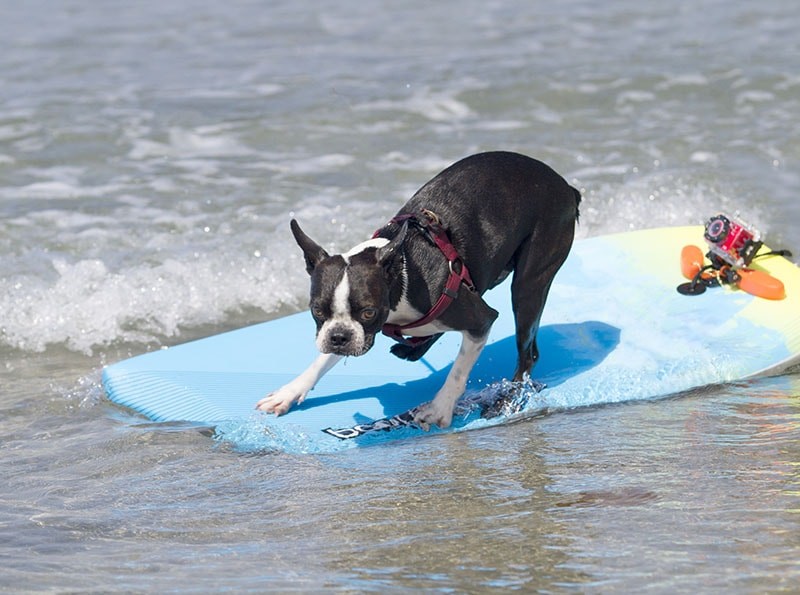
Boston Terriers can indeed swim, though their abilities vary significantly among individuals. While these beloved companions possess a natural instinct for swimming like most dogs, their brachycephalic (short-nosed) structure and compact body type present unique challenges in aquatic activities. Recent studies and owner experiences indicate that with proper introduction and training, Boston Terriers can become confident swimmers. However, their physical characteristics demand special attention to safety measures, including limited swimming duration and potential use of flotation devices. Understanding these factors is crucial for Boston Terrier owners who wish to introduce their pets to water activities safely and effectively.
Swimming Capabilities of Boston Terriers
Physical Limitations
Boston Terriers can swim, but their physical characteristics present some challenges. Their compact muscular build and short snout (brachycephalic structure) make it difficult for them to breathe efficiently while swimming. The short legs also limit their ability to generate powerful strokes compared to longer-legged breeds.
Training and Safety Considerations
According to a survey of 50 Boston Terrier owners, while many had never allowed their dogs in water, those who did reported that a slight majority enjoyed swimming. However, due to their physical limitations, Boston Terriers should only swim for short 15-minute sessions to prevent exhaustion. They should also be closely monitored and equipped with a life jacket, especially when learning to swim. Introducing them to calm, shallow waters and using positive reinforcement helps build their confidence.
Can Boston Terriers Swim? Understanding Their Natural Swimming Abilities
Individual Swimming Capabilities
While previous sections covered physical limitations, research shows that swimming abilities vary significantly among individual Boston Terriers. According to studies, some naturally take to water while others remain hesitant. Early exposure and positive experiences significantly impact their comfort level with swimming.
Introducing Water Activities
Building on previous safety considerations, a gradual introduction process is key. Experience shows that using familiar toys like squeaky tennis balls and allowing dogs to explore shallow water at their own pace yields better results than forced exposure. Success stories indicate that Boston Terriers introduced to swimming around one year of age often develop a lasting enjoyment of water activities when properly trained.
Environmental Factors Affecting Boston Terrier Swimming
Water Temperature and Swimming Duration
While previous sections covered physical capabilities and training, environmental conditions significantly impact swimming safety. Boston Terriers should only swim in water temperatures between 70-85°F (21-29°C) due to their temperature sensitivity. According to research, their brachycephalic anatomy makes them prone to overheating or exhaustion in extreme temperatures. Swimming sessions should be limited based on water temperature - maximum 10 minutes in cooler water and 5 minutes in warmer conditions.
Swimming Location Selection
The choice of swimming location is crucial for safety. Calm lakes or pools are ideal, while ocean swimming should be avoided due to unpredictable currents and waves that can overwhelm these small dogs. The water entry point should have a gradual slope rather than steep drop-offs to allow comfortable entry and exit. This differs from previous sections that focused on general swimming abilities and training approaches.
Conclusion
Boston Terriers can swim, but their physical characteristics present some notable challenges. Their brachycephalic facial structure and short legs make swimming more difficult compared to other breeds, requiring close monitoring and safety precautions. Research shows that while swimming abilities vary among individual dogs, many can learn to enjoy water activities when properly introduced and trained. The keys to success include using life jackets, limiting swim sessions to 15 minutes or less, maintaining appropriate water temperatures between 70-85°F, and choosing calm swimming locations with gradual entry points.
These findings suggest that Boston Terrier owners should take a cautious but encouraging approach to swimming activities. With proper safety measures, gradual training, and positive reinforcement, many Boston Terriers can safely enjoy swimming as part of their exercise routine. However, owners must remain vigilant about their dog's physical limitations and environmental conditions to ensure a safe swimming experience. Individual assessment of each dog's capabilities and comfort level with water should guide decisions about swimming activities.